Attached Files Handling Mechanisms (User level article)¶



Note
This article describes the attachment handling mechanism at the user level. For admin-level information, please refer to Attached Files Handling Mechanisms (Admin level article).
Two ways of attachments saving¶
Files attached to emails and events can be saved in Salesforce in two ways:
- As Content Documents (Files)
- As Attachment objects
When you save an attachment as an Attachment object, depending on whether it is an email or event attachment:
- Email Attachment: The attachment will be saved separately for each selected object. For instance, if you save an email to one contact and one account, then in Salesforce, three duplicate attachments will be created: one for the task or email message, one for the selected account, and one for the selected contact.
- Event Attachment: The attachment will be linked only to the Event object created. The event will then be linked to the selected objects. If the event is deleted, the attachment will be deleted as well.

However, if you save an attachment as a Content Document (File), it will be saved to Salesforce as a separate file so you can access it on the Files page independently of any other records.
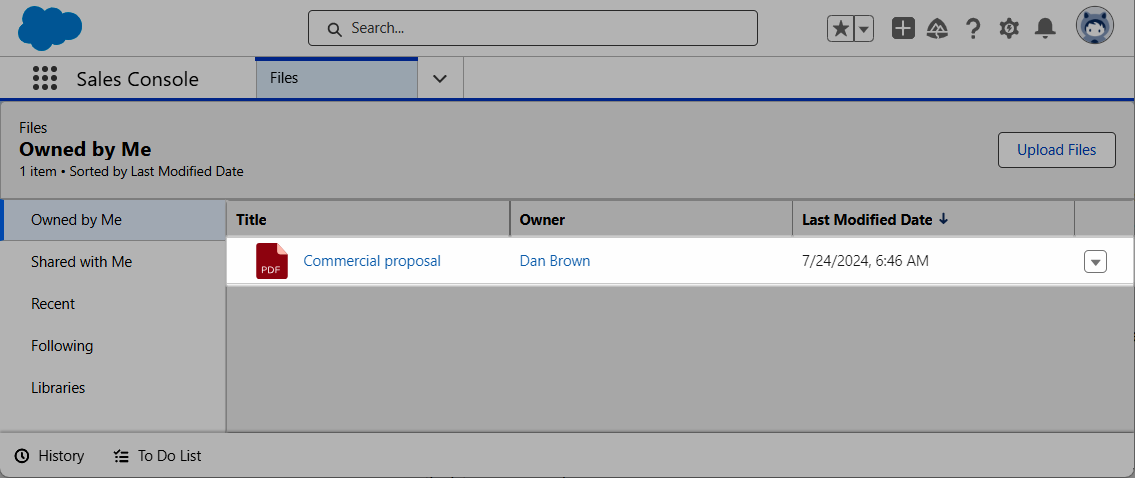
This Salesforce file will be linked to the following:
- Event or Email object
- Event or Email owner
- Other objects manually selected by the user when saving via the Sidebar or automatically by the Server Sync according to your sync settings.
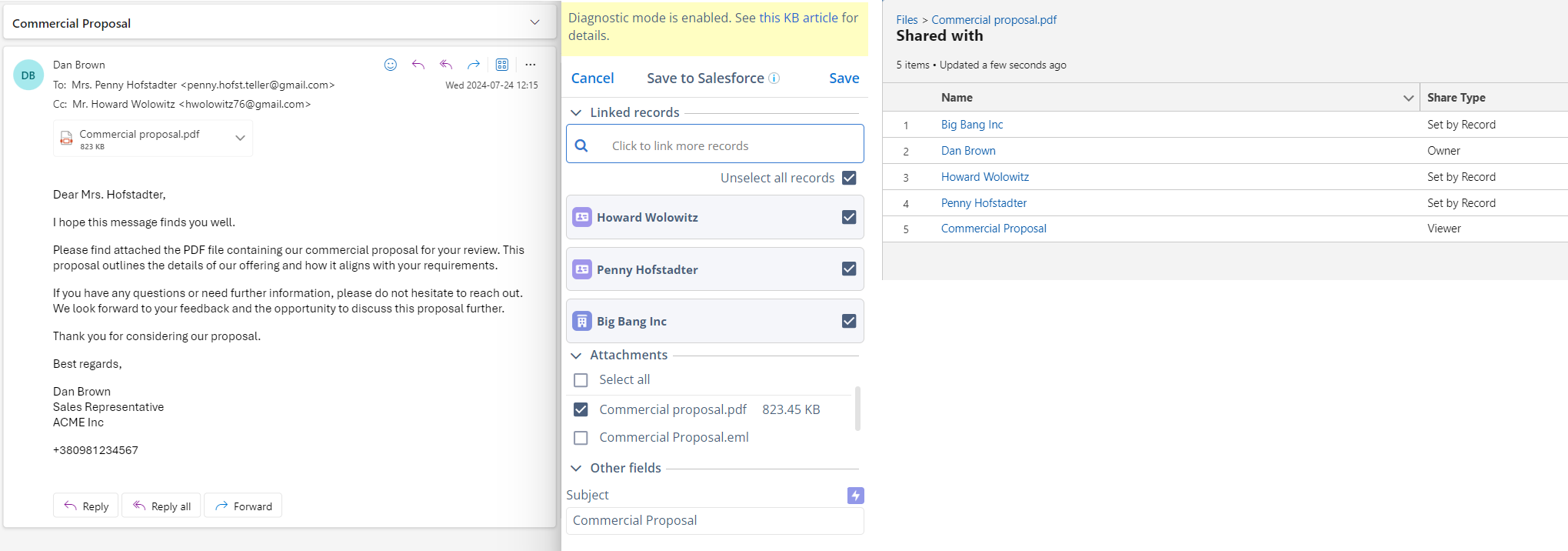
Important
To be able to view Content Documents linked to the Task/Email message or Event object in Salesforce, make sure to enable the Related lists > File object to the Task object’s page layoutin Object management settings.
Saving attachments as Content Documents prevents file duplication in Salesforce storage and optimizes file management, making it the preferred method. We recommend the other method only when saving attachments as Content Documents cannot be enabled.
By default, email attachments are saved as Content Documents, while saving event attachments is disabled.
Limitations¶
RG Email Sidebar cannot save attachments in Salesforce in the following cases:
- Items attached to Outlook emails or events as OneDrive or other cloud location links
- Email attachments added inline to the email
- Emails opened in Compose mode
For more information about inserting inline images to emails, see How to Insert an Inline Image in an Outlook Message.
To learn the difference between Read and Compose modes, see Ways to Save an Email in Salesforce.
Saving Email attachments¶
Note
The patterns described in the article are only valid for the default setup. Some specific aspects of attachment saving and linking mechanisms can be adjusted with assistance from our Support team.
Saving email attachments via the Sidebar¶
If you manually save an attachment with an email via the Sidebar (select an email, mark relevant records, and click Save) and the saving as Content Documents feature is enabled, the attachment will be saved in Salesforce as a single file, linked to the task or email message, its owner and the objects selected in the Sidebar.

When saving as Content Documents is disabled, the email attachment will be saved separately for each selected object. For instance, if you save an email to one contact and one account, then in Salesforce, three duplicate attachments will be created: one for the task or email message, one for the selected account, and one for the selected contact.
In either case, the files are stored in Salesforce under Notes & Attachments of the associated object(s).
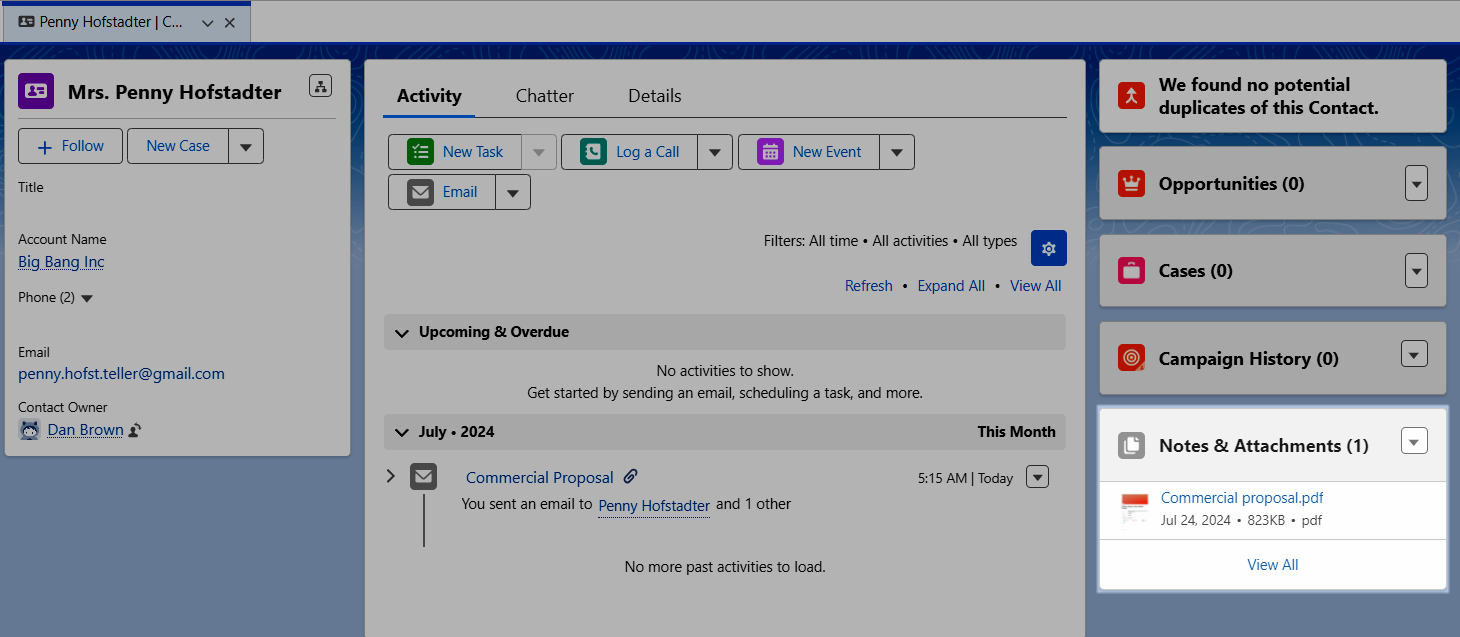
If you manually save an attachment to a particular record via the Sidebar:
- By expanding a record’s details and then clicking on + (Add) next to Attachments.
- By clicking Attach next to a file listed in the Files tab on a record’s card.
- By selecting Attach files from the picklist of actions available for a record.
The attachment (both content document and attachment object) will be linked only to this specific record.
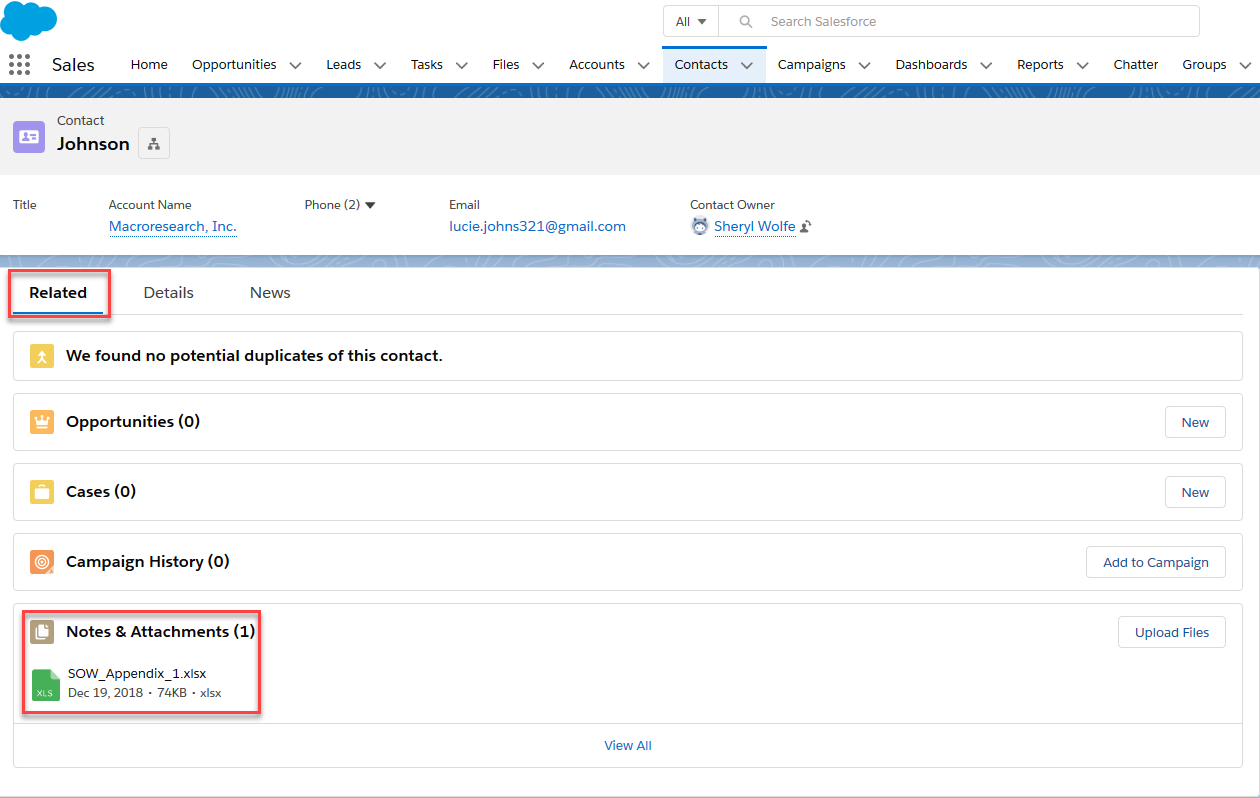
Saving email attachments by assigning Salesforce category¶
Note
The patterns described in this section only apply to saving attachments as Content document files. If Attachment objects are used instead, the files will be linked only to the corresponding Task or Email message object.
If you save an attachment by assigning the Salesforce category to the email/event containing it, it will be saved in Salesforce by Revenue Grid synchronization.
By default, the attachment will be linked to the corresponding Task/Email message object, while the Task/Email message itself will be linked via the Name and Related to fields to the relevant Lead/Contact and Account and available Case or Opportunity records (if linking to Opportunities is enabled), found by RG Email Sidebar Initial Search, and with the record Owner’s profile.
Depending on your organization’s settings, you can also link the attachment directly to the associated Contacts.
Note that unlike in the case of manual email/event saving (see point ( 1 ) ), there is no way to save the “default attachment” (the email message in .eml format) when the email gets saved in Salesforce by Sync Engine.

Auto-saving email attachments¶
Note
The patterns described in this section are only applicable for saving attachments as Content document files. If Attachment objects are used instead, the files will be linked only to the corresponding Task or Email message object.
Suppose email auto-saving is enabled in sync settings, and an email containing attachments is received from or sent to a known (registered in Salesforce) contact. In that case, the email will be saved in Salesforce along with the attachment(s) during the next synchronization session. The linking patterns will be the same as when saving by assigning a Salesforce category.
Note that auto-saving messages containing attachments should not consume excessive Salesforce storage space since duplicate prevention and specific file type/size filtering are applied.
Important
Please note that an email attachment cannot be auto-saved in Salesforce by Revenue Grid synchronization in the following cases:
- If it exceeds the file size limit in Salesforce, which is 25 Mb for a single file.
- If the file’s extension is blocklisted in the Global settings managed by our Support team or is not allow-listed in local Admin Panel settings. However, in the latter case, the file can be saved in Salesforce manually.
Automatic pre-selection of attachments to be saved in Salesforce¶
You can configure the default preselection of files attached to emails or calendar items in the Save dialog. A corresponding setting is located at the bottom of the right pane of RGES Customization settings. The available options are:

- Autoselect only attached files > 100 KB: This option prevents the saving of small images or animations (e.g., those in signatures) in Salesforce. Users can still select them manually if needed.
- Preselect the attachment file type in Save dialog: Only the specified file types will be autoselected for saving to Salesforce in the Sidebar’s save dialog. After selecting this option, a box for specifying file types will appear underneath. Specify file types without any dots, e.g., txt
- Autoselect all attached files: All attached files will be autoselected to be saved in Salesforce. Users can unselect unneeded attachments.
- Do not autoselect attached files: No attached files will be autoselected. Users can manually select the needed files.
The “default attachment” .eml copy of an email¶
If you need to save:
- An exact copy of the email message, including all technical delivery data and headers, for example, to use it as legal evidence
- Special HTML formatting in the email (e.g. inline tables, diagrams, and so on) in case Salesforce Enhanced email is not enabled in your Salesforce Org
- The message in Salesforce without truncation applied, if the email’s body exceeds the 32,000 characters limit
You can attach an exact copy of the message in .eml format to the created Task or Email message Salesforce object.
To do that in the Save dialogue, select the checkbox next to the “default attachment” {email subject line}.eml generated for every email message. Note that you can also rename the .eml file according to your preferences.
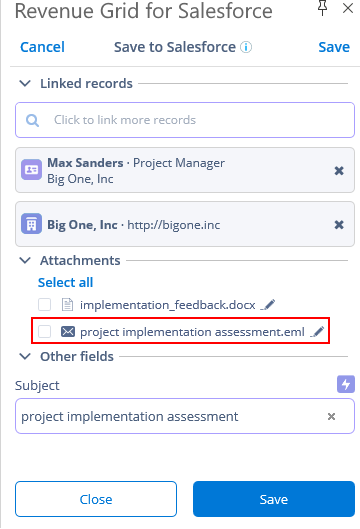
The possibility to save this “default attachment” .eml file in Salesforce can be disabled by request sent to Revenue Grid support team.
Note
Please note that with Salesforce Enhanced email enabled, due to a technical limitation, when you save an email along with its attachments in Salesforce via RG Email Sidebar, the created Email message object’s HasAttachment field does not convey accurate information about the presence of these attachments, so this flag/field should be disregarded
Attachments added as Google Drive links in RGES Chrome Extension for Gmail¶
RG Email Sidebar implementation for Gmail also supports saving and auto-saving in Salesforce of files attached to email messages as Google Drive links.
These links are parsed by the Chrome Extension and handled via the Save email dialog as any other attachments.
This feature can optionally be disabled for Enterprise RGES customers by request sent to RevenueGrid.com CSM team using a Special RGES setting GoogleDisableDriveAttachments.
Saving Event Attachments¶
Note
Out-of-the-box, saving of event attachments by RGES is disabled; in order to enable it, please send a corresponding request to Revenue Grid support team.
Saving event attachments by Revenue Grid Synchronization¶
Saving files attached to meetings in Salesforce is performed during RGES Synchronization sessions, along with saving the meetings themselves as matching Salesforce Event objects.
When an event attachment is saved as an Attachment object, it will only be linked to the created Event object in Salesforce, and then the event itself will be linked to the related objects selected by the Revenue Grid Synchronization according to the configurations.

When you save an event with an attachment as a Content Document, it will be saved to Salesforce as a separate file, linked to the event, its owner, and other records the Synchronization selects according to its configuration in your organization.
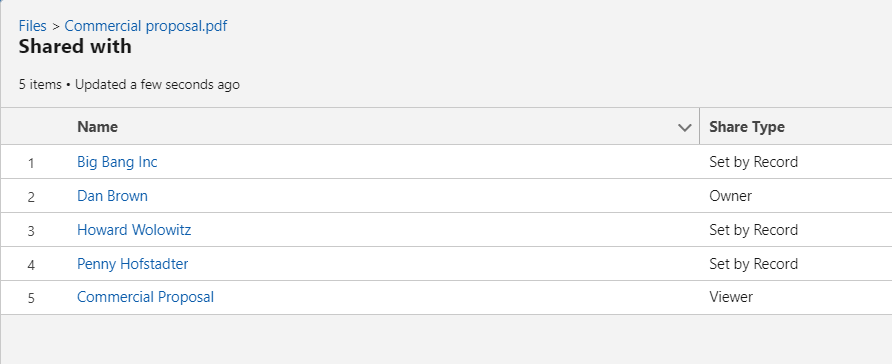
If you save the attachment as a Content Document and then delete it in the mailbox, the connection between the file and the event in Salesforce will be removed. However, the connection between this file and all other objects linked to it will remain intact.
For more information about events linking, refer to Activities Linking Patterns in Salesforce.
Saving event attachments via the Sidebar¶
Even though events are auto-synchronized during RGES Synchronization sessions, you can save an event via the Sidebar without waiting for synchronization. In this case, you can manually select the objects to which the event will be linked.
Unlike saving emails, event attachments can be saved in both Read and Compose modes.
Special considerations about event attachments saving¶
- The attached files’ size + the event’s body should not exceed 25 Mb.
- If the Don’t allow HTML uploads as attachments or document records security setting is enabled for your Org, you cannot upload files with the following file extensions: .htm, .html, .htt, .htx, .mhtm, .mhtml, .shtm, .shtml, .acgi, .svg
- Attachment saving is not supported for a single event belonging to a series of recurring events.
- A file extension filter managed via RGES Admin Panel and file size filters managed by the Revenue Grid support team are applied to prevent the saving of potentially unsafe files and various small images from invite signatures.
- All files attached to the calendar item that pass the above-listed filters will get synced; there is no way to select a specific one to be saved.
